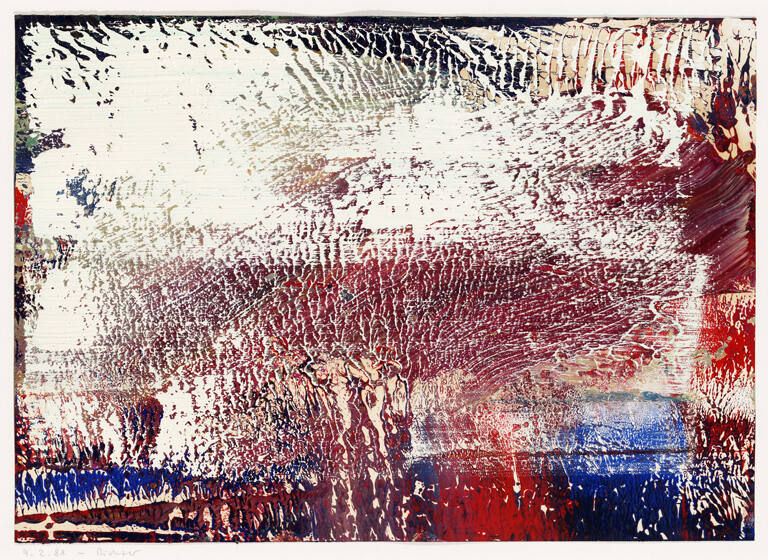
Object Details
Artist
Gerhard Richter
Date
1988
Medium
Oil on paper
Dimensions
Image: 11 1/2 × 16 3/4 inches (29.2 × 42.5 cm)
Frame: 24 3/16 × 19 5/8 × 1 1/2 inches (61.4 × 49.8 × 3.8 cm)
Credit Line
Acquired through the generosity of the Harriett Ames Charitable Trust
Object
Number
96.008
The artistic production of Gerhard Richter falls into three broad categories: figurative, that is, a(…)
The artistic production of Gerhard Richter falls into three broad categories: figurative, that is, all the paintings based on photography or nature; constructive, more theoretical work such as color charts, greys, glass panes, and mirrors; and abstract, most of the work since 1976 except for still-lifes and landscapes. The variety in his work does not indicate a lack of interest in reality but rather a greater confidence in accurately presenting different models to convey it. In fact, starting with the first picture in his catalogue raisonné, Richter has been comfortable combining both figuration and abstraction in many of his pictures. Richter’s main sources for his figurative work of the 1960s were ordinary black-and-white family snapshots or pictures appropriated from the media. The banality of these images and their muted color range helped Richter to maintain an attitude of expressive neutrality. The abstracts, which Richter has concentrated on throughout the 1980s and 1990s, usually begin with a soft ground of primary colors arranged in a variety of geometric patterns. Richter then applies an overlay of paint, which is brushed, dragged, squeegeed, or streaked in aggressive colors. This process of simultaneous creation and destruction, often repeated several times, makes it difficult to determine the figure-ground relationship. RichterÕs abstracts, clearly his most spontaneous, visually complex, and emotionally evocative work, perpetuate the tradition of Modernist painting. (From “A Handbook of the Collection: Herbert F. Johnson Museum of Art,” 1998)












